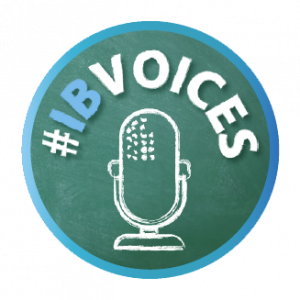Because of the social distancing measures that have been put in place around the globe due to COVID-19 (Coronavirus), teachers have suddenly needed to move to a completely new way of working. For many teachers, this means working remotely, be it via asynchronous or synchronous online means, without necessarily having had any prior training to work in this way. Teachers have become the face of the schools in these times, showing their resilience, creativity, innovation, expertise and professionalism.
To continue to add to the collaborative sharing of teachers globally, in this episode of IB Voices, math teacher, author and educational consultant Dr. Jennifer Chang Wathall, provides top tips on how to manage the remote learning environment as effectively as possible.
Listen to the full interview on the IB Voices podcast
Zach: As you know, teachers all around the globe (including IB teachers) are in this really unusual place right now where they’re teaching, not from their classroom, but perhaps from their living room or some other place that is not what they’re used to. As a result, they’re venturing into online teaching, which as a concept is not new, but for some teachers, it could be incredibly new, incredibly difficult.
So my first question is: do you have any tips for teachers that suddenly find themselves required to teach in an online environment without any training?
Jennifer: A great question. I think it’s all teachers. I don’t necessarily think it’s just teachers that were not familiar or didn’t use online learning regularly, but I think all teachers have been thrust into a situation where they’ve had to, in a matter of a very short space of time, teach online remotely from their homes with students isolated in their home as well.
So, what are some tips? One big one is that there are natural and normal stages that we go through when we adopt an e-learning environment.
And the first stage is a survive stage. It’s where we just try to ensure that there’s accessibility in terms of tech devices, in terms of Wi-Fi and the like. Given that there may be inequitable access to online learning for students and families, the first stage that any teacher should focus on is whether their students can have access to Wi-Fi or digital tools. From there, then determine what the learning management system (LMS) is, and make a decision on what tool to use. Make those decisions first.
After the survive stage, is the stride stage, where teachers are trying to learn how to use the tools now at their disposal. That’s the beginning of their online journey, and to not necessarily have any synchronous meetings in the very, very beginning. We need to give teachers a chance to learn how use some of the tools and give students some time as well. And we have to be really mindful in the beginning not to jump straight into trying to have live, synchronous lessons and get on as if things are normal, because things are not normal in this current state.
Third is the thrive stage, where teachers are starting to really think about pedagogical strategies to engage and motivate their students because they’ve got all the digital tools sorted out. They understand the accessibility issues, and they understand which families have which devices, and who can access them. And once we get over those initial stages, then we can start thinking about enhancing learning and thriving.
That brings us to our last stage: arriving. Arriving at a total transformation of pedagogy and a transformation of learning where we have a completed unit that adopts the most effective blended learning practices to enhance students’ learning.
So again, we are not going to be straight away jumping into trying to plant the most engaging, motivating learning experiences for our students. We have to look at the the digital tools, survey families to see what kind of access they have, and take it slowly. Less is more, so don’t expect that you’re going to cover the entire curriculum exactly like you did in the brick and mortar school, and don’t expect that whatever that you did in the brick and mortar school can transfer directly into the online environment. It’s really about rethinking some of our approaches.
“Don’t expect that whatever that you did in the brick and mortar school can transfer directly into the online environment. It’s really about rethinking some of our approaches.”
So, for teachers who are fortunate enough to have reached the thrive or arrived stage, what are some measures that they can take to ensure that their students are using technology safely and appropriately? Especially since a student’s familiarity with technology or online learning might vary, whether they’re in an elementary school age or a high school age.
Jennifer: Yes, I think we have to really focus on student agency and empowerment here. And we must teach them responsibility, in terms of their own self-regulation and meta-cognition. That can be reinforced through essential agreements. I think it’s so important that we have co-created essential agreements with parents and with the whole community without students, so that there is a common understanding and expectation of how we behave in terms of netiquette, or expectations in terms of when we expect students to come to class — or even how much work they should be completing. And I think it’s important that we also take into consideration that different regions around the world will have different data protections and privacy protection protocols that we need to incorporate. But ideally if the school can co-create with the school community essential agreements, then you’re going to have everybody on board.
Zach: I think something that goes along with self-regulating, is self-regulating of your time. I know as somebody who works a desk job and is now working at home, that my nine to five standard hours seem to stretch as the days go on, and I think by the very nature of an online environment and the use of all these multiple devices inevitably means that there can be an expectation that teachers are available 24/7.
How do you think teachers can manage this to prevent things from getting out of hand?
Jennifer: We must be very mindful of teacher workload. And at the same time, we must be mindful of student workload, because whatever the teacher is planning and trying to encourage students to do, it will be reflected in the student’s workload.
Teachers need to try and strike a balance in their lives and their daily schedule, and create a schedule, like having fixed office hours. But also, really investing their free time into their well-being, by getting some exercise, or spending time with their family, or even just reading a book.
It’s important teachers manage their time. It’s so easy to get lost in a rabbit hole. But If the school community understands what teachers are going through, I believe there’s so much compassion and empathy now for each other, that parents, families and students will understand – because they need a break, too! They don’t want to be up at 10 o’clock at night emailing a teacher with a question. They should be spending quality time with their family in these very challenging times, and they should be focusing on their well-being. So it’s not just teachers. I think everybody should be really taking some time out, every day, to concentrate and well-being, to focus on something positive.
“We have to really focus on student agency and empowerment here. And we must teach them responsibility, in terms of their own self-regulation and meta-cognition.”
As somebody who works with schools, could you share any examples of how you’ve seen blended learning work really well?
Jennifer: Yes. And I must mention, it normally takes six to nine months to plan an effective blended learning program. So, when you’re given just one day, or two weeks even, the emergency remote situation is probably not the most effective blended learning environment. But, we’ve had to do that because we haven’t had the time for preparation. Now that some schools are reaching this 10-week to 15-weeks stage, they’ve evolved and progressed and improved and found that one of the big takeaways was not to follow the same timetable as they did in the brick and mortar.
We can’t be requiring students to be online from eight o’clock to four o’clock and attending all their different lessons. That does not work because we have to combine the best of both the synchronous face-to-face with the asynchronous. That’s one big thing. And then the other schools have found that when they followed these very four important blended learning elements, they found that there was more motivation and engagement:
- Connection: A lot of research says that when there’s no human connection interaction in an online environment, students become unmotivated, disengaged, and without any sense of belonging. So, when we’re in the virtual environment, it’s really important that we try to promote that sense of belonging and connection.
- Collaboration: I suggest having a study buddy or a thinking partner, and that applies to students and teachers. Students and teachers need to be able to bounce ideas off others, to ask questions, or even just unload about frustrations.
- Clarification: In an online environment, lots of questions come up and you might have to wait until the next day to clarify instructions, learning experiences, or just to answer simple questions. And so, the third element of blended learning is to provide clarification – no matter how simple – and that can be done synchronously or asynchronously.
- Critical thinking and conceptual thinking: We still want to engage students’ intellect during this time. We still want to be asking those very important conceptual questions to draw out their understandings.
Wonderful. Thank you so much for sharing. This has been fantastic. Is there anything you’d like to say to our IB teachers specifically?
Jennifer: You know, to all the IB teachers, I know that you’re working so hard at the moment and it is overwhelming, but what you’re doing for your students shows that you care so much. We appreciate you. The school community appreciates you. The world appreciates what teachers are doing globally now. And you know, we will be able to get back to seeing our students.
Thank you, Dr. Jennifer Chang Wathall for your time and support of the IB community. For more information on the great work Jenny does, you can visit her website here. And for more advice on how to take care of yourself, your students, and your family during these difficult times, subscribe to IB Voices for more of our special well-being episodes.

This interview was conducted by Zachary Fernebok, Product Marketing Manager for the Diploma Programme and Career-related Programme at the International Baccalaureate, and one of the hosts of IB Voices. Listen to more stories from students, schools, educators and more on the IB Voices podcast.
If you enjoyed this story, consider reading more below:



